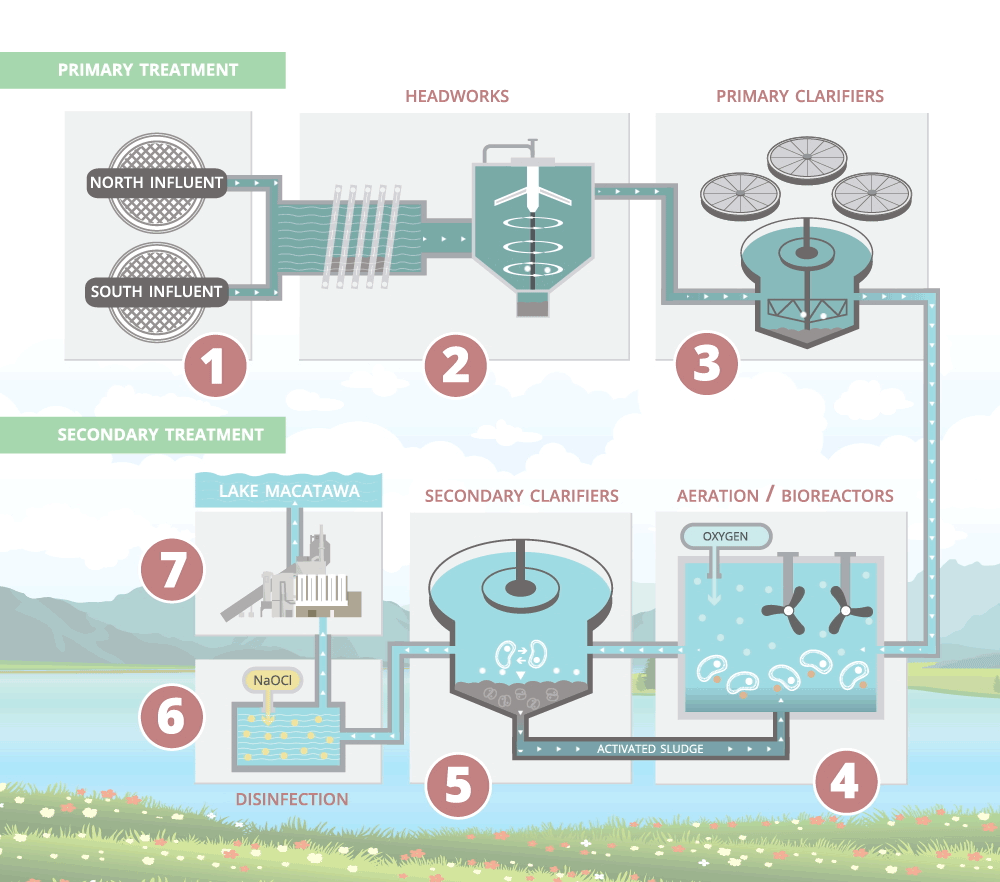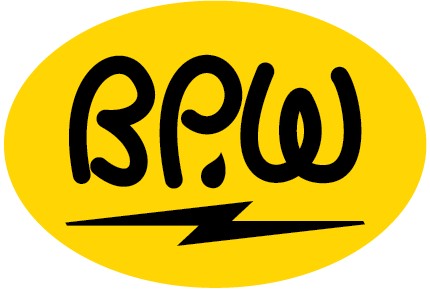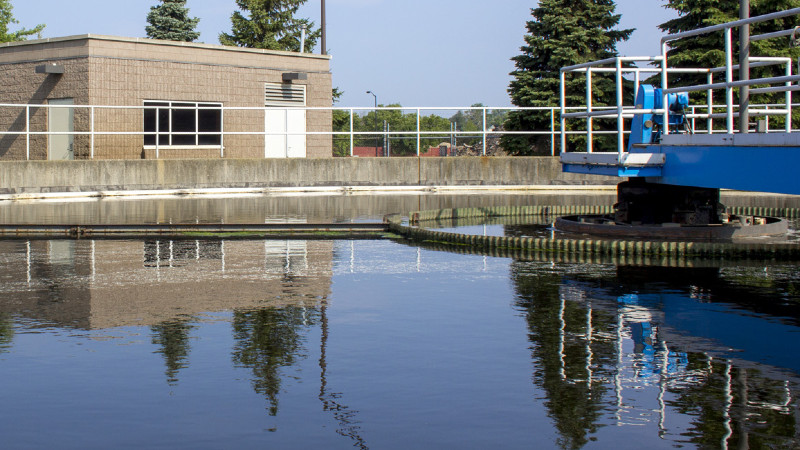How Water Reclamation Works
The Water Reclamation Facility (WRF) treats wastewater from the City of Holland and portions of the five adjacent townships (Holland Charter, Park, Fillmore, Laketown and Zeeland). The wastewater received from the city and townships arrives through two pipes, one from the north and one from the south side.
Holland BPW maintains all of the sanitary sewer collection system south of Lake Macatawa and the Macatawa River. This system contains nearly 190 miles of sanitary sewer pipe and 35 sewage lift stations. This system is separated, which means the surface drainage is collected into storm sewers and drains, and the sewage from homes or businesses goes into a separate system – the sanitary sewer system.
Maintaining Our Systems
Maintaining reliable service for our customers requires strategic facility and process upgrades. Since beginning service in 1927, the WRF has undergone five major renovations (1960, 1972, 1982, 1996 and 2017). Each renovation has increased the capacity of the facility. The most recent renovation was a thorough upgrade to the aeration, oxidation and clarification equipment. Much of the equipment was over 40 years old and upgrading the equipment allowed HBPW to address increasing loading. The project increased treatment capacity levels by over 20% without increasing the facility footprint.
Our plant has a hydraulic loading capacity of 12 million gallons per day. On an average day, about nine MGD of wastewater is coming into the plant. The hydraulic capacity is variable, meaning it is based on the pollutant loadings such as Biochemical Oxygen Demand (BOD) and Chemical Oxygen Demand (COD). The wastewater is treated in several stages. The primary stage includes removing floating and settling pollutants. The next stage, secondary treatment, includes using biological and gravity treatments to remove suspended pollutants that have passed through the primary treatment. This meets all discharge permits issued by the EPA and EGLE, and allows the treated wastewater to be released to Lake Macatawa.
Fiscally responsible decisions result in affordable rates for customers. When faced with the need for greater capacity, Holland BPW pursued the most cost effective solutions and optimized treatment processes. HBPW transitioned their equipment from a conventional Activated Sludge Process to a High Purity Oxygen Activated Sludge Process. This means that pure oxygen activates the sludge process rather than air supplied by large blowers. Since the microorganisms that feed on harmful organic materials need lots of oxygen to work effectively, the upgrades enable a more concentrated waste stream to be treated in the same footprint of the facility.
The Process
The Holland Area Water Reclamation Facility treats water from the city and several surrounding townships. Water enters through two primary sanitary mains coming from the North and South. After treatment, the plant’s effluent is released into Lake Macatawa and is actually cleaner than the lake itself.

1. Wastewater influent from the community enters the plant from the north and south.
2. The influent streams combine at the headworks facility, which filters out inorganic solids larger than 1/4” by using mechanically cleaned bar screens. It also removes any sand and gravel with a vortex grit removal system.
3. The flow splits between four primary clarifiers where heavier solids and organic matter settle to the bottom. Ferric chloride is added prior to the tanks to serve as a coagulant, sticking to the phosphorus in the flow stream and settling out with the solids.
4. Flow from the primary clarifiers enters aeration basins where it mixes with oxygen and “activated sludge” from the secondary clarifiers. Microorganisms from the sludge begin to feed on any organic particles in the oxygen-rich environment.
5. When the flow reaches the secondary clarifiers, the growing microorganisms clump and form larger masses which settle out most remaining suspended solids into “activated sludge.” Some of the sludge is then returned to aeration to replenish the microbes there.
6. We disinfect the effluent flow from the clarifiers with sodium hypochlorite to kill any remaining harmful bacteria.
7. After treatment, the plant’s effluent is released into Lake Macatawa and is actually cleaner than the lake itself.


